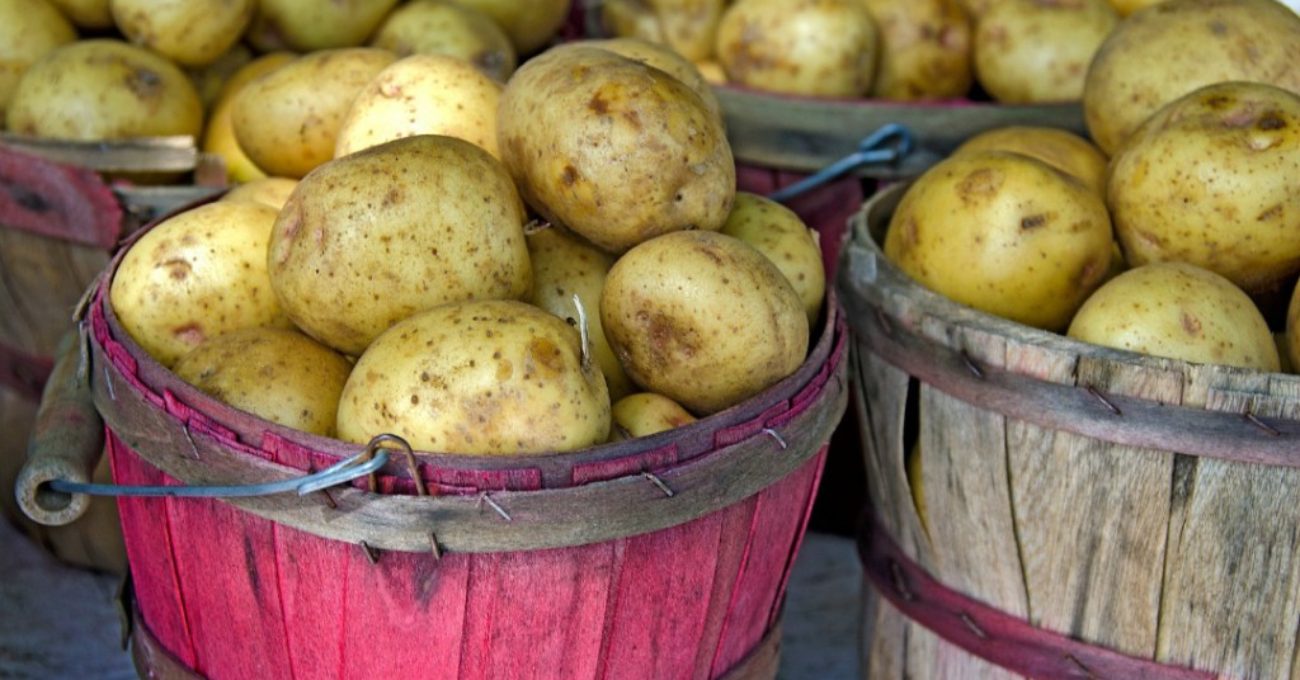The hunt for the perfect potato (TVO.org)
In 1980, potato breeder extraordinaire and University of Guelph alumnus Garnet (Gary) Johnston unleashed a new strain of potato on the commercial world: the now-legendary Yukon Gold. Its robust yellow flesh and eye-free skin made it a crossover success, topping the charts for mashed, baked and fried alike.
Johnston created many other potato strains throughout his career — Huron, Nipigon, Rideau, Simcoe, Conestoga, Eramosa, Saginaw Gold, to name a few — but the Yukon Gold dwarfed them all in popularity. Harrowsmith ran a feature. Johnston worked the national interview circuit on radio and TV. Potato growers emblazoned their potato sacks with the name “Yukon Gold.”
The strain became — and remains — one of the most widely grown and consumed potatoes across North America, Europe and the Pacific Rim.
For more than three decades, no new potato strain has come close to achieving Yukon Gold’s level of fame and fortune.
But that hasn’t stopped people from trying. Plant breeders want to develop new varieties to address almost every potato-related problem — drought, disease, shipping standards, storage, climate change, and evolving quality standards for major potato markets. As Gary Johnston did before them, today’s breeders passionately pursue new standards in potato excellence.
“The new Yukon Gold could be sitting in a field right now. And we hope it is,” says J. Alan Sullivan, a professor in the department of plant agriculture at the University of Guelph. “In a breeding program it takes 14 years from when we create a new strain, to identifying something that has commercial value.”
Sullivan and other University of Guelph researchers work closely with the Potato Breeding Program at Agriculture and Agri-Food Canada and use classical cross-breeding methods as opposed to high-tech genetic modification.
Sullivan says other research programs that have experimented with genetic modification have not had much commercial success, in part because major companies like McCain and McDonald’s reject them due to customer discomfort with the process.
Conventional cross-breeding unites strains with different desirable qualities, in the hopes that their descendants will embody the best of both. Each new cross is grown, tested and grown again on an ever-increasing scale.
Potatoes take longer than many species to test, because they are “vegetatively propagated,” meaning that they have to keep harvesting and replanting – researchers can’t just dip into a bag of seeds to plant and test in different environments.
Once breeders are confident that they have something worthy of commercial testing it still takes a few more growing seasons before a new strain arrives in the shops.
Potatoes have a better nutrient profile and higher yield than rice, but rice remains much more widely consumed, largely because it is easier to store. Potatoes also demonstrate unusual versatility. Not only can they be baked, boiled, roasted, scalloped and mashed, but they also become soups, pies, vodka, skordalia, french fries and potato chips.
For the home market, breeders are working on developing a versatile Yukon-Gold style potato with better disease and pest resistance, better adaptability to climate variation, and higher yield. But certain commercial sectors are looking for other specific qualities in their dream potato.
The Canadian potato chip industry, for instance, would like to have locally sourced potatoes available year round.
“Virtually all of our potatoes are supplied by Canadian farmers except when supply is unavailable and product must be sourced elsewhere,” says Frito Lay spokesperson Sheri Morgan. She says there are only about four weeks each year when no local potatoes are available, but they’d like to cut that to zero. “We are working hard to minimize the need to source potatoes elsewhere by developing prolonged storage and early harvest methods.”
Storage methods don’t merely involve building a better warehouse. It also means building a better potato. The longer a spud sits, the more of its starches turn to sugars. Frying sugary potatoes turns them dark brown and bitter. Sullivan is working to create breeds that keep their starches longer.
While a more storable potato would postpone the beginning of the seasonal spud shortage, earlier planting and quicker maturing can hasten its end.
Of course, it’s more complicated: earlier harvests tend to mean smaller potatoes and lower yields. Frito Lay needs potatoes about the size of a baseball — no larger and no smaller. They also need 17 to 21 per cent solids in each potato, to ensure the correct crunch in the final product. These and many other factors make it no small task to breed the perfect chip potato.
To the average consumer, a bag of potatoes might seem like the essence of mundaneness. But Sullivan says people can easily miss the mountain of achievement behind a pile of potatoes.
“They’re not seeing everything we rejected. They don’t see the potatoes that had a poor consistency, or didn’t bake well. They’re seeing the best of the best of the best,” he says. “That potato did not get on the shelf by accident. Everything was carefully tested and planned all along its history.”
Journalist and author Patchen Barss has written, edited and produced stories about science, research and culture for more than 20 years.
